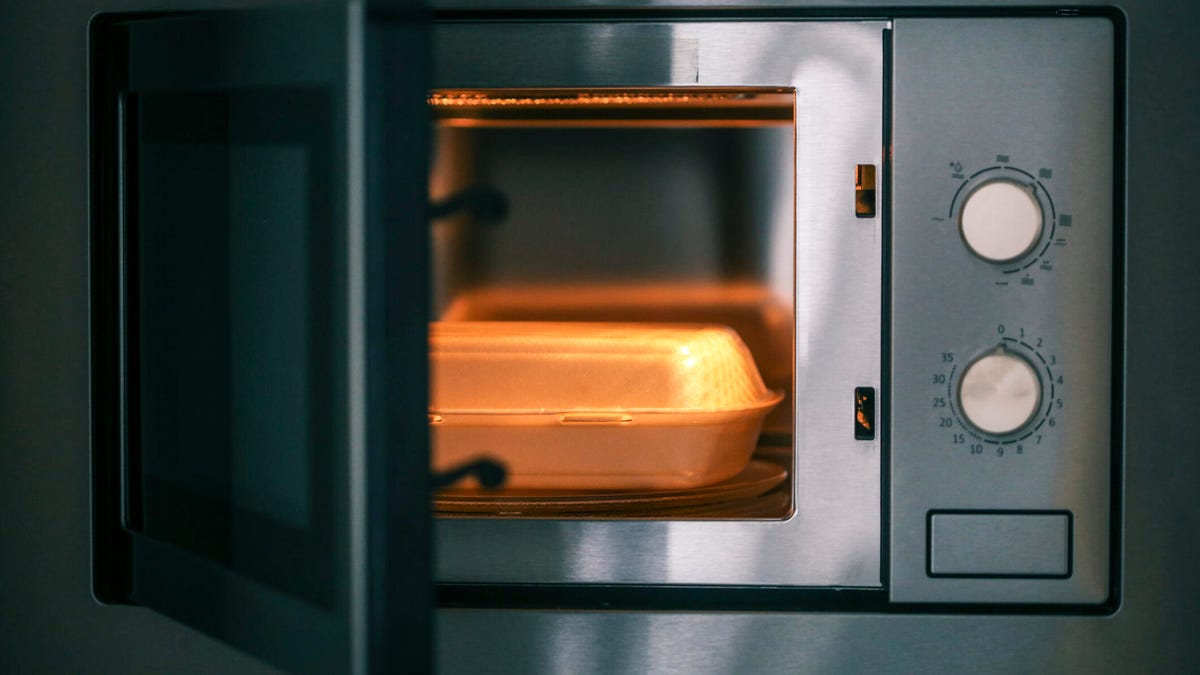When hunger strikes and you want a quick meal, warming up last night’s leftovers in the microwave feels like a convenient option. However, doing so in the original plastic takeout containers can expose you to microplastics and harmful chemicals, raising significant health concerns.
Numerous studies have established a connection between microplastic exposure and serious medical conditions, including infertility and certain types of cancer. Therefore, it is vital to choose the right container when reheating your food.
Most Takeout Containers Are Not Heat-Safe
Ricardo Jarquin, executive chef at Loews Coral Gables in Miami, emphasizes, “If you’re using takeout containers to reheat food, they need to be labeled as heat-safe. Most restaurants do not use them because they’re more expensive.” He adds that common plastic takeout containers are generally unsafe for reheating.
In contrast, aluminum, cardboard, and paper-based containers typically do not contain plastic and are suitable for storing and reheating food. On the other hand, cheap plastic containers pose significant risks and should never be used. Styrofoam containers are especially hazardous, as they can melt in the microwave, indicating they are not suitable for reheating.
Safer Alternatives to Plastic Containers
So, what’s the best way to enjoy your meal safely? Experts suggest using materials that are known to be safe for reheating. Jarquin, along with Hope Montgomery, owner of Brick & Mortar in St. Petersburg, Florida, provided insights into safe reheating methods.
Montgomery advocates for the use of compostable paper, aluminum, or cardboard containers, which she prefers for her restaurant. For those who want to ensure their food is stored in a heat-safe container, the best option is to use your own.
Jarquin recommends, “The safest containers are BPA-free, or even better, glass ones like Pyrex. Stainless steel and aluminum are great, too, just not for the microwave.” A versatile 10-piece set of containers, available in various sizes, is an excellent option for accommodating different portion sizes, whether you’re reheating a full entree or a small dessert.
Beware of Misleading Plastic Labels
While many plastic containers come with labels claiming they are “microwave- and freezer-safe,” trust can be misplaced. Plastic containers should ideally avoid being frozen or heated, as prominent brands Ziploc and Rubbermaid face lawsuits over their claims. Studies show that when plastic is heated, it can leach harmful chemicals into food, and freezing can break the plastic, leading to contamination.
Guidelines for Safe Reheating
To keep food safe, it is crucial to never reheat leftovers in containers that are not heat-safe. This category includes most inexpensive plastic takeout containers, like clamshells or black plastic dishes. Even deli containers are deemed “food safe” for storage but are not advisable for reheating food at high temperatures.
When using the microwave, always opt for glass or ceramic containers, and keep any plastic or rubber utensils away from the microwave, reserving them solely for serving.
How to Preserve Flavor While Reheating
In addition to safety concerns, you want to ensure that your reheated food maintains its flavor and quality. Montgomery notes, “Though microwaving is quick and easy, better results can often be achieved by reheating on the stovetop.” Adding a little olive oil, butter, or seasonings can enhance the flavor, except in cases like her beef tenderloin carpaccio, which is best enjoyed fresh.
Jarquin agrees, stating, “You get a much better result when reheating leftovers in a frying pan or in the oven.” He also points out that some dishes, such as rigatoni with vodka sauce, can taste even better the next day. “The flavors soak in even more, and the texture stays great when reheated slowly,” he adds. Other dishes he recommends enjoying at home after dining out include stews, curries, chili, and lasagna, which generally improve with time.
Protecting Against Bacteria Growth
Food safety extends beyond just the reheating process; it also involves managing bacteria growth. As Jarquin mentions, time is of the essence: “The general rule is that it takes about two hours at room temperature and one hour if it’s really hot out.” After these timeframes, bacteria can proliferate rapidly, even if they aren’t visible or smell noticeable.
At the end of the day, if you harbor any concerns about microplastics or foodborne illnesses, it may be prudent to forgo leftovers. In such cases, preparing a homemade meal might ensure that you can enjoy your food without any potential health risks, all while avoiding plastic altogether.






